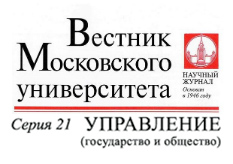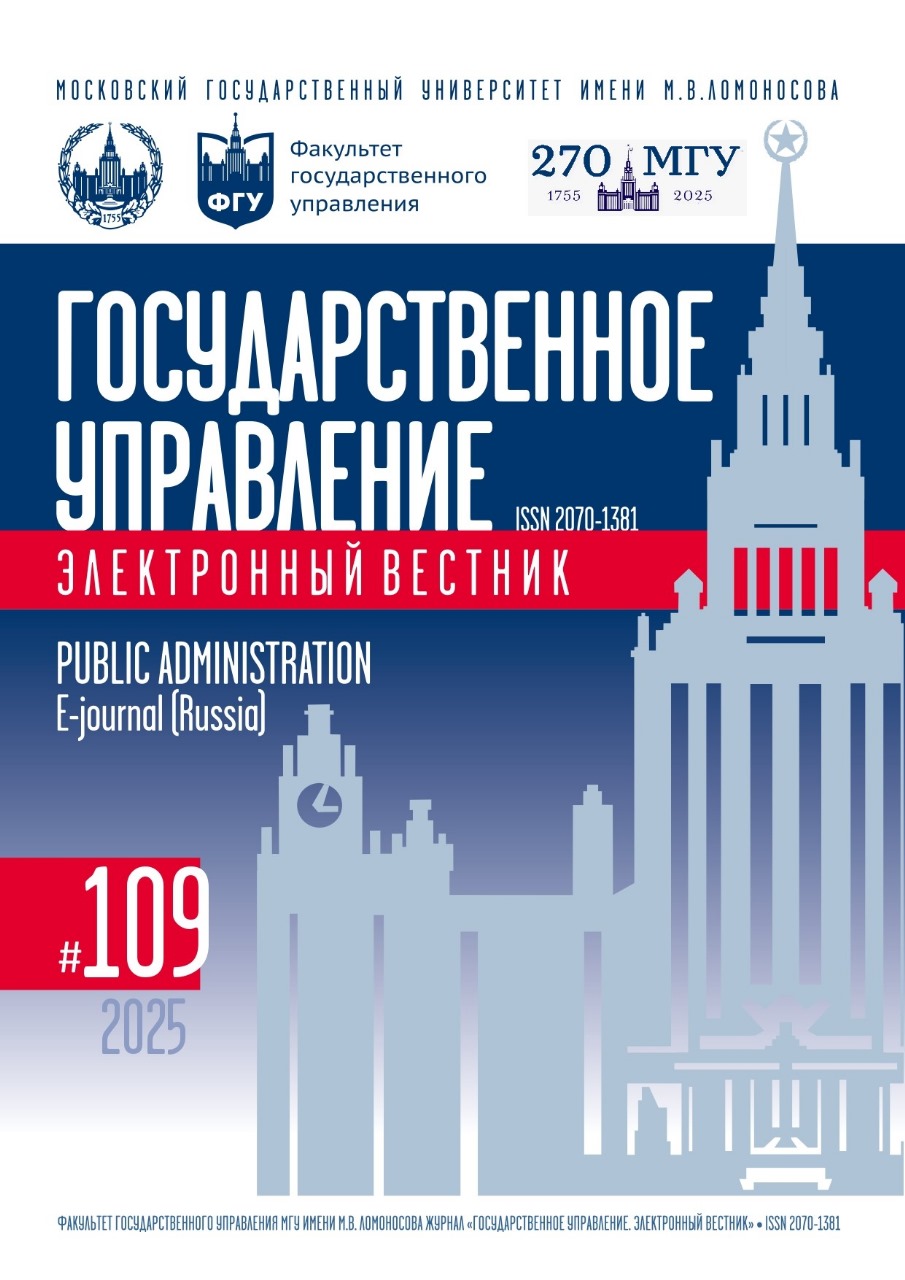Political Leadership in the Plural: Problems of Conceptualization
DOI:
https://doi.org/10.55959/MSU2070-1381-109-2025-123-131Keywords:
Political leadership, joint leadership, distributed leadership, political tandem, collective leadership.Abstract
The article describes the model of joint political leadership, understood as a process of interaction between several top officials between whom power is dispersed at the national or party level. It is noted that this is a relatively new object of political science research, which requires theoretical conceptualization to determine the possibilities and limitations of the implementation of this model as an alternative to individual leadership. The aim is to characterize the model of joint political leadership, to identify its strengths and weaknesses compared to individual political leadership, to determine the factors that influence its formation and sustainability. For its realization the reasons for the emergence of joint political leadership are determined, the criteria for its identification are highlighted, the institutional conditions at the national and party levels in which its realization is possible/difficult are defined, and the problem of its sustainability in the medium term is posed. Based on the generalization of modern theoretical approaches, the conclusion is made that joint political leadership, on the one hand, successfully solves the problems of personification and representativeness of power, and curbs populist incentives in the behavior of politicians. On the other hand, the functioning of this model requires not only a specific configuration of institutions in the state, but also a special personal motivation of politicians themselves, who understand the importance of distributed power for their career and are able to exercise leadership functions in tandem or team. It is emphasized that the basis of shared leadership on a national scale is the party system, which in case of its ineffectiveness in reflecting public demands, creates a social demand for individual leadership of populist nature.
References
Блондель Ж. Политическое лидерство: путь к всеобъемлющему анализу. М.: Российская академия управления, 1992.
Лейпхарт А. Демократия в многосоставных обществах. Сравнительное исследование. М.: Аспект пресс, 1997.
Сиденко О.А., Щеглова Д.В. Коллективное публичное лидерство в современном государственном и муниципальном управлении // Вестник Воронежского государственного университета. Серия: История. Социология. Политология. 2021. № 4. С. 78–83.
Сосунов Д.В. Феномен коллективного публичного лидерства в региональном законодательном процессе Воронежской и Тамбовской областей // Политическая наука. 2023. № 1. С. 227–245. DOI: 10.31249/poln/2023.01.10
Bennister M., Hart P., Worthy B. Assessing the Authority of Political Officeholders: The Leadership Capital Index // West European Politics. 2014. Vol. 38. Is. 3. P. 414–440. DOI: 10.1080/01402382.2014.954778
Burrett T. Contemporary Prime Ministerial Leadership in Britain and Japan. London: Palgrave Macmillan, 2023.
Campus D., Switek N., Valbruzzi M. Collective Leadership and Divided Power in Western European Parties. London: Palgrave Macmillan, 2021.
Dennis J.-L., Langley A., Sergi V. Leadership in Plural // Academy of Management Annals. 2012. Vol. 6. Is. 1. DOI: 10.5465/19416520.2012.667612
Larson T. The Role and Position of Ministers of Finance // Governing Together. The Extent and Limits of Joint Decision-Making in Western Europe Cabinets / ed. by J. Blondel, F. Muller-Rommel. London: Palgrave Macmillan, 1993. P. 207–222.
O’Toole J., Galbraith J., Lawler E. When Two (or more) Heads are Better than One: The Promise and Pitfalls of Shared Leadership // California Management Review. 2002. Vol. 44. Is. 4. P. 65–83. DOI: 10.2307/41166143
Raelin J. What Are You Afraid of: Collective Leadership and its Learning Implications // Management Learning. 2018. Vol. 49. Is. 1. P. 59–66. DOI: 10.1177/1350507617729974
Shugart M. Semi-Presidential Systems: Dual Executive and Mixed Authority Patterns // French Politics. 2005. Vol. 3. P. 323–351. DOI: 10.1057/palgrave.fp.8200087
Shugart M.S., Carey J.M. Presidents and Assemblies. Constitutional Design and Electoral Dynamics. Cambridge: Cambridge University Press, 1992.
Downloads
Published
Issue
Section
Categories
Similar Articles
- Anastasiya A. Zhokhova, Problems of Developing Researches on Women’s Political Leadership: A Bibliometric Analysis , Public Administration. E-journal (Russia): No. 106 (2024)
- Antonina V. Selezneva, Azamat Kh. Tomaev, Alexandra A. Khatkevich, Youth Political Leadership in Institutional Dimension: Shaping Environment and Development Features , Public Administration. E-journal (Russia): No. 98 (2023)
- Ivan S. Palitay, Arina S. Devochkina, State Youth Policy in Recruitment System of Political Leader , Public Administration. E-journal (Russia): No. 103 (2024)
- Anton P. Khlopko, Evolution of CSTO Bodies’ Structure in the Context of Transformation of Military and Political Situation in the Post-Soviet Space , Public Administration. E-journal (Russia): No. 107 (2024)
- Antonina V. Selezneva, Viktotia Ye. Zinenko, Youth Political Leadership in Institutional Dimension: Shaping Environment andDevelopment Features , Public Administration. E-journal (Russia): No. 87 (2021)
- Ilya A. Khabarov, In Vector of Political Self-Organization: Current Trends of Municipal Cross-Functional Interaction , Public Administration. E-journal (Russia): No. 92 (2022)
- Natalya I. Kharitonova, Prospects for Moldova’s Integration into NATO , Public Administration. E-journal (Russia): No. 97 (2023)
- Oleg N. Zabuzov, Representation of “Russian threat” in Military Documents of Unfriendly Nuclear States , Public Administration. E-journal (Russia): No. 100 (2023)
- Natalya I. Kharitonova , Eco-Geopolitics as a New Concept in the Geopolitical Paradigm of International Relations , Public Administration. E-journal (Russia): No. 86 (2021)
- Pavel A. Boev, Evolution of Interaction Mechanisms between the USSR and the BSSR to Eliminate Consequences of the Chernobyl Disaster , Public Administration. E-journal (Russia): No. 110 (2025)
You may also start an advanced similarity search for this article.




